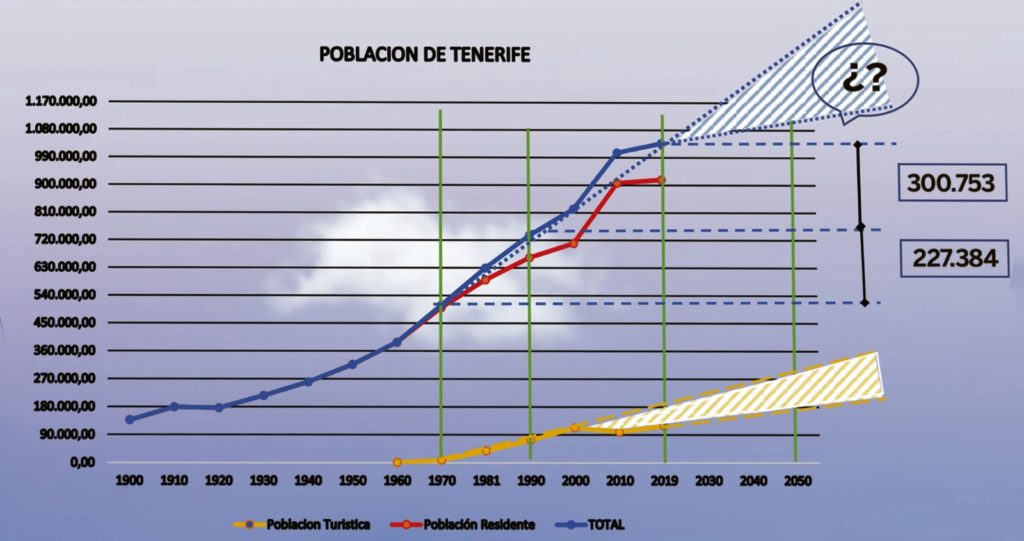
In a study carried out by Rufino García Fernández, the population of Tenerife is collected from 1900 to the year 2020, as well as the stay of tourists. At the beginning of the 20th century, the Island had 137,469 inhabitants and in 2019 the figure reached 917,841, which, adding tourists per day, exceeds one million (1,036,518).
If we take the last 30 years, Tenerife has grown by an annual average of 10,000 inhabitants, “something like a municipality like El Sauzal every year”, the engineer Rufino García points out graphically.
In addition, when the North and South highways were built in the 1970s, they had a horizon of 25 years, when only half of today’s population resided on the Island (500,381 inhabitants plus 8,000 tourists/day).
The average number of daily vehicles for the most congested sections (Laguna-Santa Cruz and Guaza-Adeje) was 20,000 cars per day in that decade, today it reaches 115,000 on these sections.
To get a comparative idea of population growth in the Islands, Rufino García cited the case of Mallorca, which, with a rate of 244 residents per square kilometer, has been debating this issue for some time, and recalled that Japan, considered one of the countries most populous in the world, has an average of 334.
“If, in addition, we take into account that 49% of our territory is protected and, if we do these same accounts on 51% of usable land, the population density in Tenerife is close to 1,000 inhabitants per square kilometer,” he said. . Following this population evolution, the Island would have 1,080,000 residents in 2030, not counting the potential tourists/day (270,000).
















